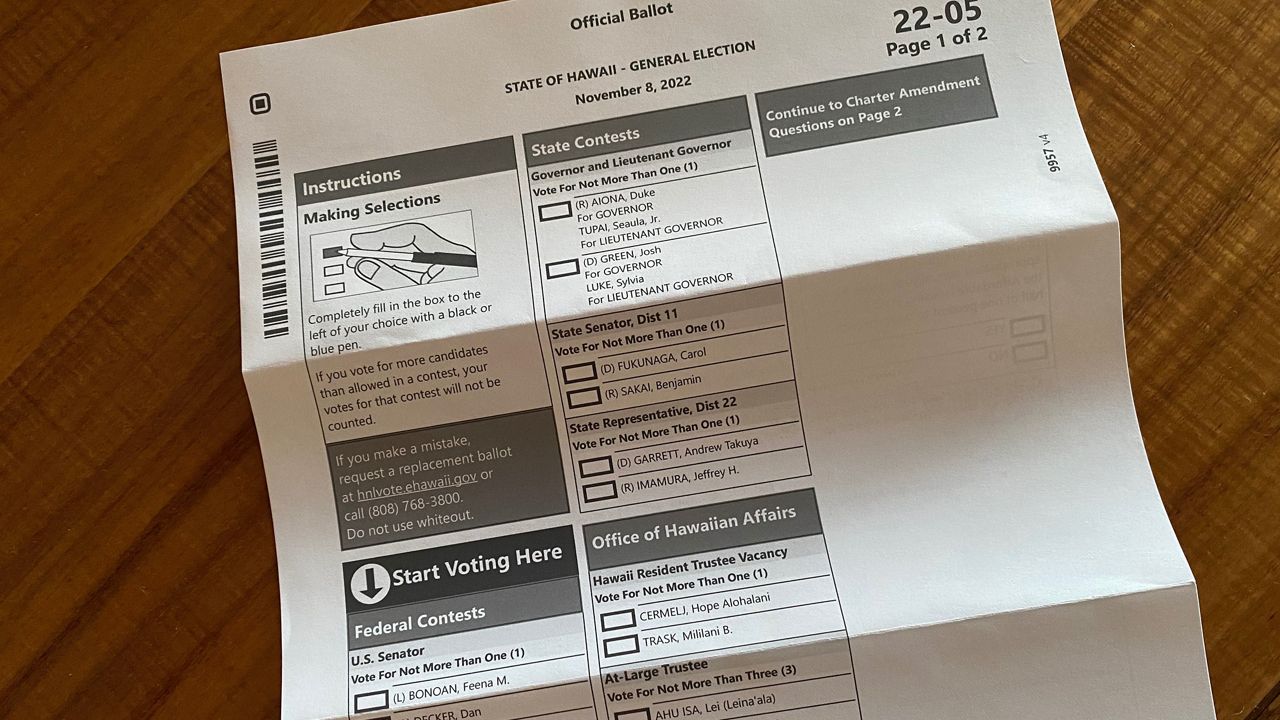In 2020, Hawaii held its first election that allowed for mail-in voting. This made Hawaii the fourth state in the U.S. to allow mail-in voting. Now, a total of eight states hold elections by mail.
Every registered voter in Hawaii receives a unique ballot.
Voters may send completed ballots via mail, placed in a drop-off box or turned in to a voter service center. However, mailed ballots should have been sent by Oct. 27 in order to be received in time to be counted by 7 p.m. on Nov. 8. Ballots placed in a drop-off box or taken to a voter service center will be counted as long as they are received by 7 p.m. on Nov. 8. A list of drop-boxes and voter service centers can be found here. Voter service centers also provide accessible in-person voting and same-day voter registration.
Returned ballots are collected by a county elections division. At each intake facility, a high-tech scanner-sorter takes an image of each piece of mail and compares the signature on the return envelope against a reference signature on file with the person’s voter registration record. If the signature does not match the signature on file or is missing, the county elections division notifies the voter, who then has up to five days after the election to resolve the issue.
It also records each ballot and credits the voter for having voted, which prevents multiple submissions.
All valid ballots are collected, caged and transferred to the state office of elections for counting.
The counting is monitored by official observers to ensure ballot-handling protocols are followed.
The procedure includes opening the envelope, removing the ballot from the secrecy sleeve, unfolding the ballot, packing it in a box, and moving it to a central location for counting. The actual counting is done by an automated scanner.
Colin Moore, the director of the Public Policy Center at the University of Hawaii at Manoa, told Spectrum News that mail-in voting is extremely secure.
“It's a unique ballot that goes to your house into your mailbox. You can see that it's been recorded,” said Moore.
In order to see if your ballot has been counted, go to BallotTrax. Voters can also sign up to receive text, email or voice alerts informing them that their ballot has been counted. Moore emphasized that if someone else cast a ballot on your behalf, you could see that via the tracking service.
According to the Office of Elections, the first readout of results will be shared once all voter service centers and drop boxes have been closed at 7 p.m.
As the vast majority of ballots are expected to be received prior to Saturday, and because Hawaii law allows ballots to be counted prior to election day (as long as results are not reported until after polls closed), it is expected that, as in the primary, the first readout will be a strong, if not definitive, indication of the ultimate outcome of all but a handful of races. A second readout will be released two to three hours later, and a final report is expected a couple of hours after that.
In the August primary, just 340,159 (39.8%) of 853,874 registered voters voted. And while greater than 90% of voters cast a ballot before election day via mail, ballot drop box or voter service center, meaning their votes were tabulated for the initial results report, long in-person lines on Maui delayed the release of those initial results by more than an hour.
Michelle Broder Van Dyke covers the Hawaiian Islands and Michael Tsai covers local and state politics for Spectrum News Hawaii.





